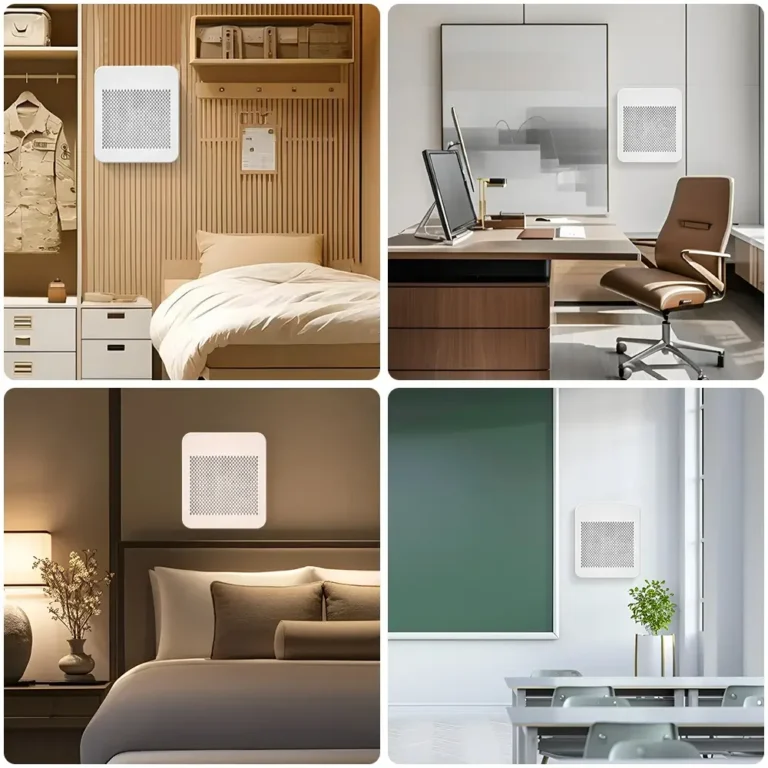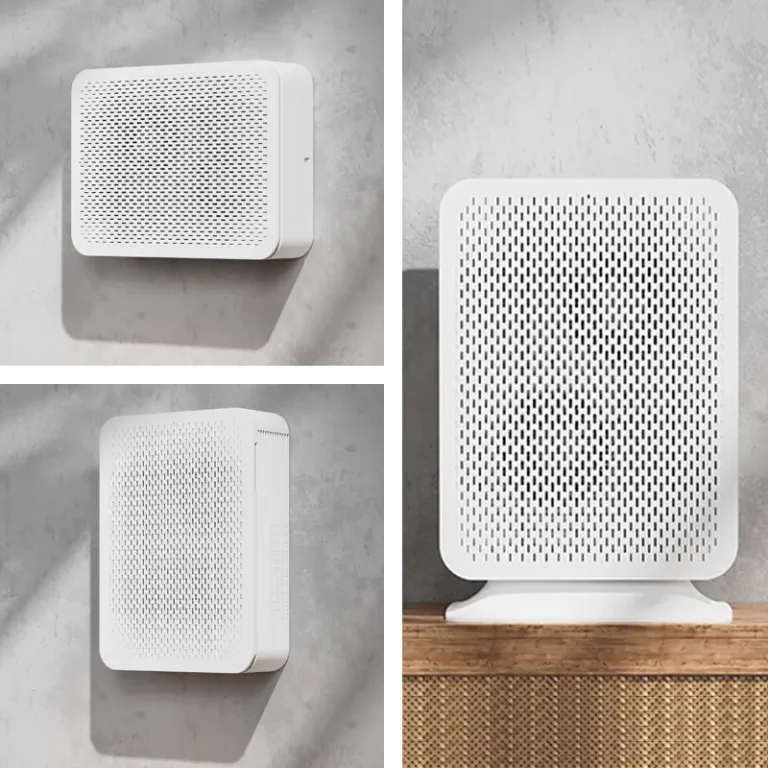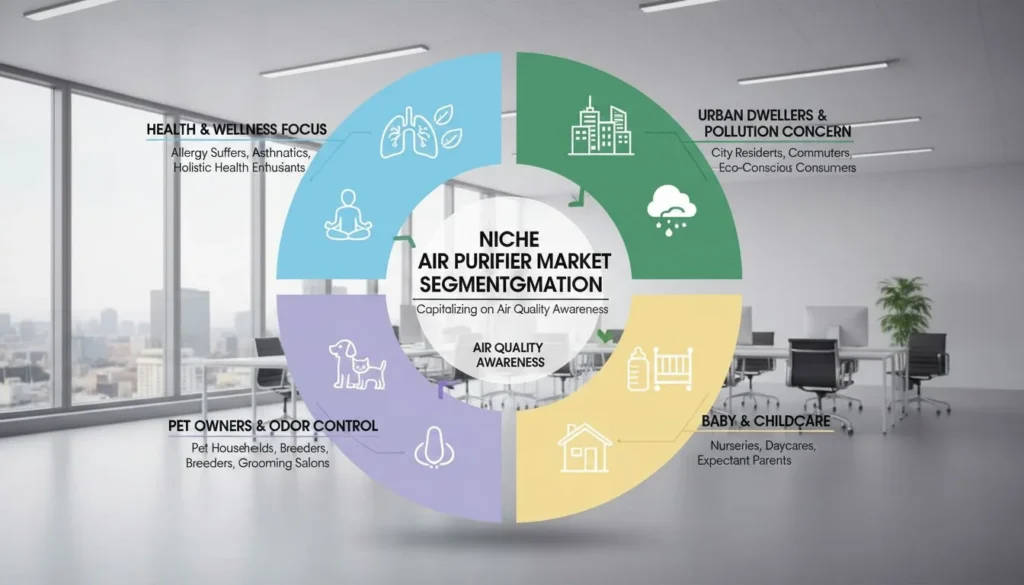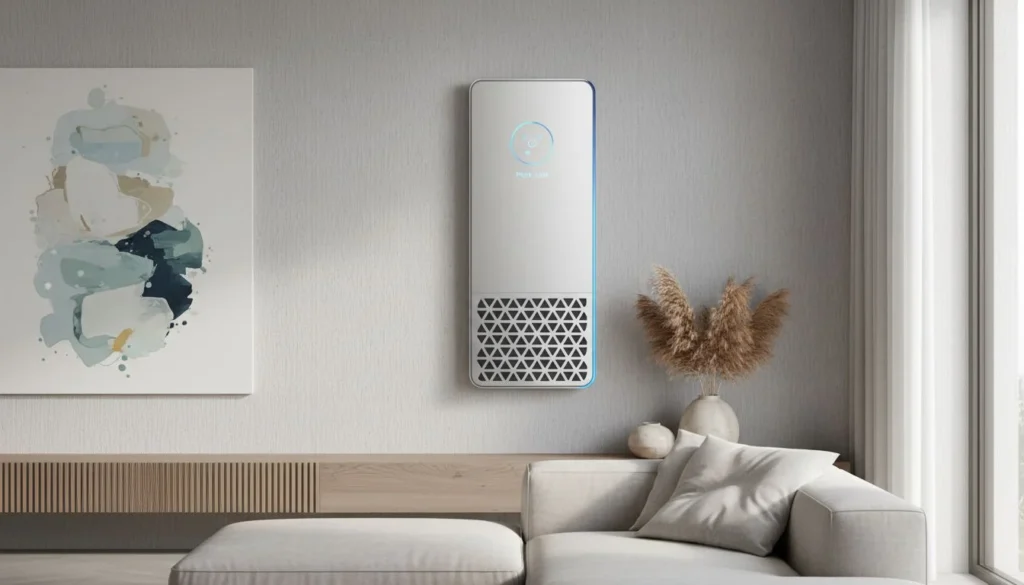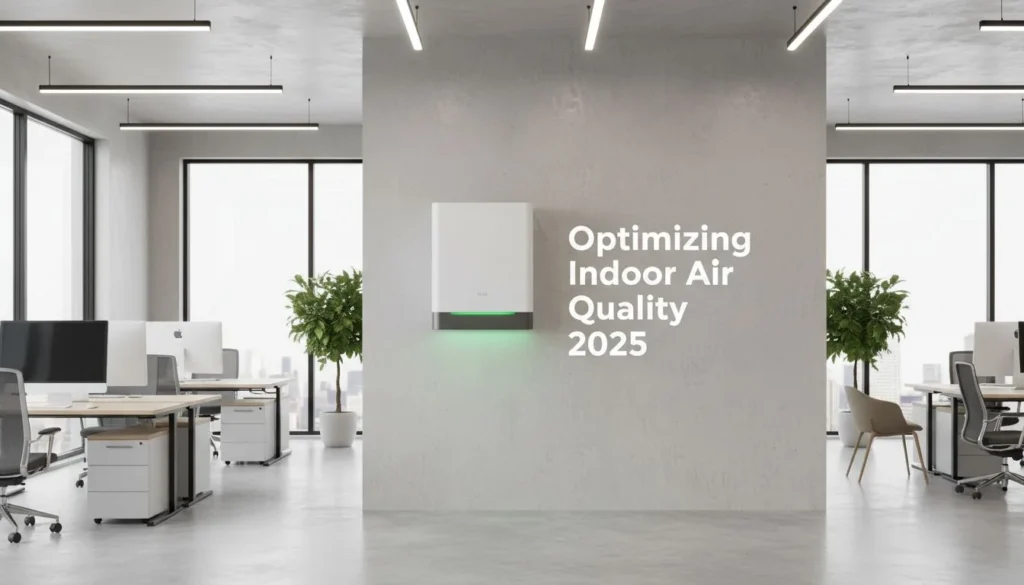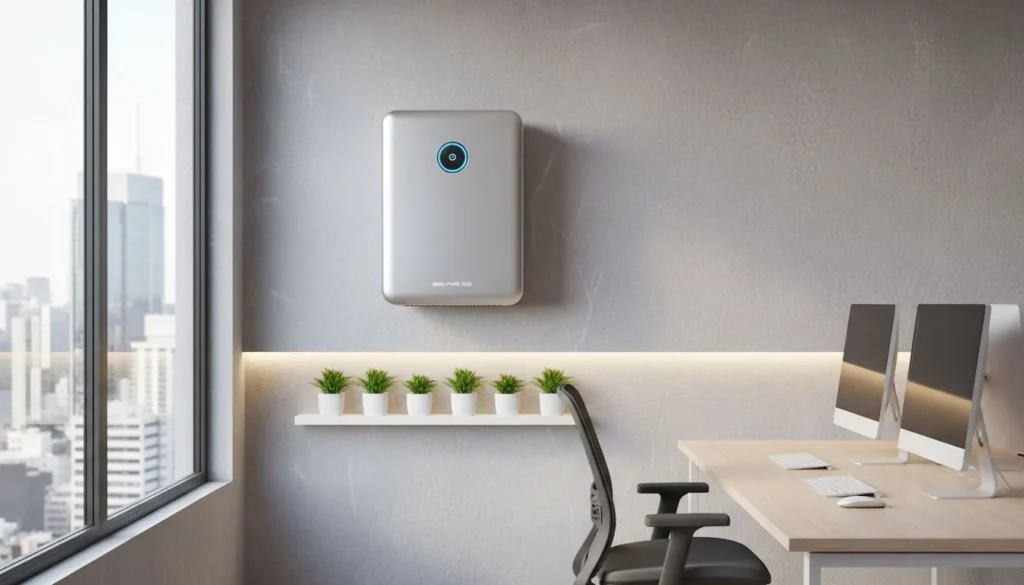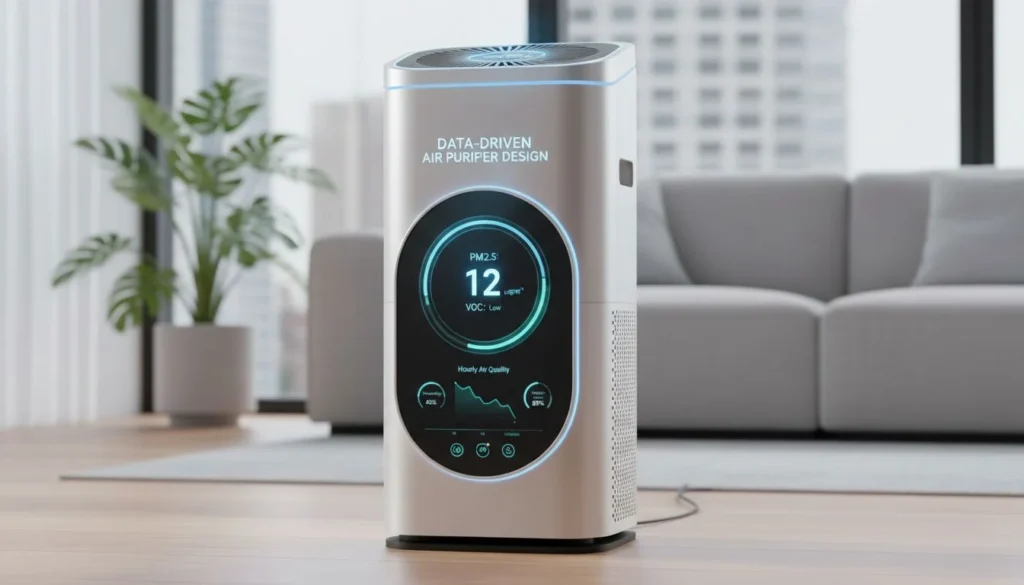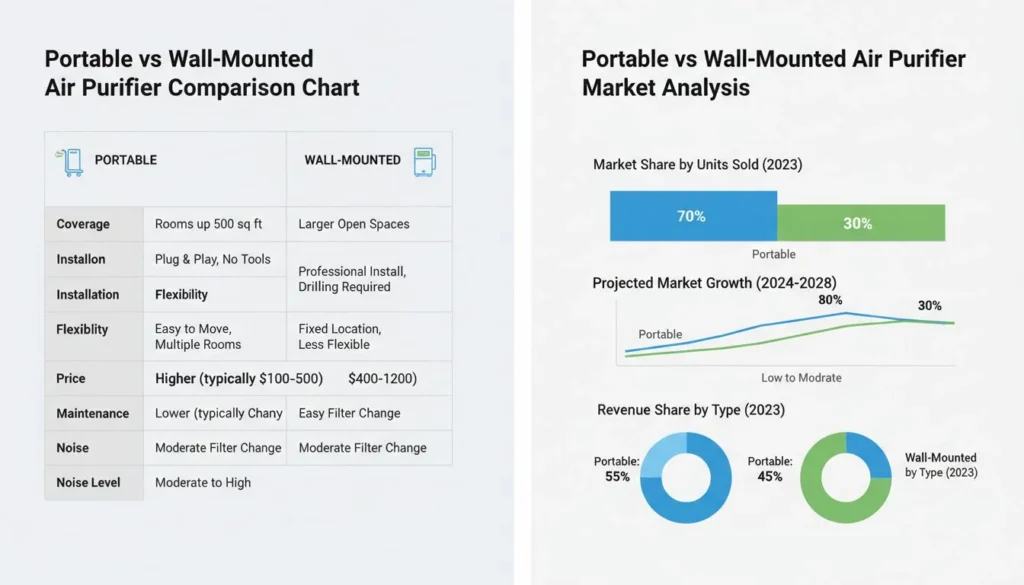라돈은 천연 가스입니다. 하지만 라돈이 집 안으로 들어와 증가하기 시작하면 위험해집니다. 아래에서 실내 공간에서 라돈 가스를 제거하고 완화하는 방법을 알아보세요!
라돈은 우라늄과 같은 특정 금속에서 생성되는 기체입니다. 라돈은 토양, 암석, 지하수에 존재합니다. 우리 주변에는 라돈이 존재한다고 말할 수 있지만 안전한 수준에서만 존재합니다.
하지만 라돈은 집과 건물에 유입될 수 있다는 점을 명심하세요. 일단 유입되면 시간이 지남에 따라 축적되어 축적될 수 있습니다. 높은 라돈 수치는 암과 같은 다양한 호흡기 질환과 관련이 있습니다. 이런 끔찍한 상황에 노출되고 싶지 않으실 겁니다.
라돈에 대한 자세한 내용과 라돈을 제어하기 위한 완화 전략에 대해 알아보려면 다음을 읽어보세요. 고품질 공기 청정기.
라돈은 어디에서 발생하나요?

이미지 출처: iStockphoto
라돈은 방사성 가스 우라늄, 라듐, 토륨이 분해되어 생성됩니다. 이러한 금속은 방사성이며 일반적으로 지하수, 암석 및 토양에 존재합니다. 라돈은 땅속에서 생성되기 때문에 그 존재가 비정상적인 것은 아닙니다. 실제로 우리는 라돈에 노출되어 있습니다.
또한 라돈은 지표수, 지하수 및 공기를 통해서도 유입될 수 있습니다. 따라서 라돈 가스가 급수관에도 유입될 수 있습니다. 흥미롭게도 우물에서 나오는 물의 라돈 농도가 지표수보다 더 높다고 합니다.
또한 라돈은 천연 가스, 특히 지하 우라늄이나 라돈이 함유된 암석/토양과 접촉한 가스에도 존재합니다. 라돈은 공기 중에 섞여 배관 및 서비스 배관을 통해 이동합니다. 따라서 히터, 온수기, 난로, 스토브 등에도 라돈이 존재할 가능성이 있습니다.
라돈의 위험은 장기간 다량으로 노출될 때 발생합니다. 흡연 경력도 라돈 관련 질병의 위험 요소를 유발할 수 있습니다. 설치 대형 공기 청정기 을 섭취하면 라돈 노출을 최소화하는 데 도움이 됩니다.
공기 중에 라돈이 있는 것이 정상인가요?

이미지 출처: iStockphoto
네. 라돈은 인공 가스가 아닙니다. 과학적으로 라돈은 환경의 자연적인 파생물입니다. 예를 들어 라돈은 토양과 암석에 존재합니다. 화석 연료와 석탄을 태우는 과정에서도 라돈이 방출됩니다.
여기서 유일한 문제는 라돈 수치가 너무 높을 때입니다. 전문가들에 따르면 안전한 수준의 라돈 는 4.0 pCi/L를 넘지 않아야 합니다. 하지만 이 수치는 이미 놀라운 수준입니다. 실외 환경의 평균 라돈 수치는 0.4 pCi/L에 불과하다는 점을 명심하세요. 여기서 중요한 것은 완화입니다.
라돈은 위험할 수 있나요?

이미지 출처: Unsplash
네. 라돈에 장기간 과도하게 노출되면 건강에 해로운 것은 분명합니다.
라돈이 체내에 들어오면 폐 전체에 방사선을 생성합니다. 전문가들에 따르면 소량의 라돈은 그렇게 나쁘지 않다고 합니다. 그렇지 않다면 문제가 될 수 있습니다.
라돈은 세포 수준에서 폐 내벽을 손상시킵니다. 이 때문에 라돈에 노출된 사람은 다음과 같은 위험이 높습니다. 폐암 발병. 현재까지의 데이터에 따르면 폐암과 관련된 사망자 중 약 2만 명이 라돈 노출로 인해 사망한 것으로 추정됩니다. 흡연 관련 사망자 수가 여전히 더 많지만, 여전히 상당한 수치입니다.
따라서 라돈이 건강에 미칠 수 있는 위험을 경시하는 것은 잘못된 것입니다. 제대로 대처해야 합니다.
라돈이 존재하는 집의 일반적인 공간
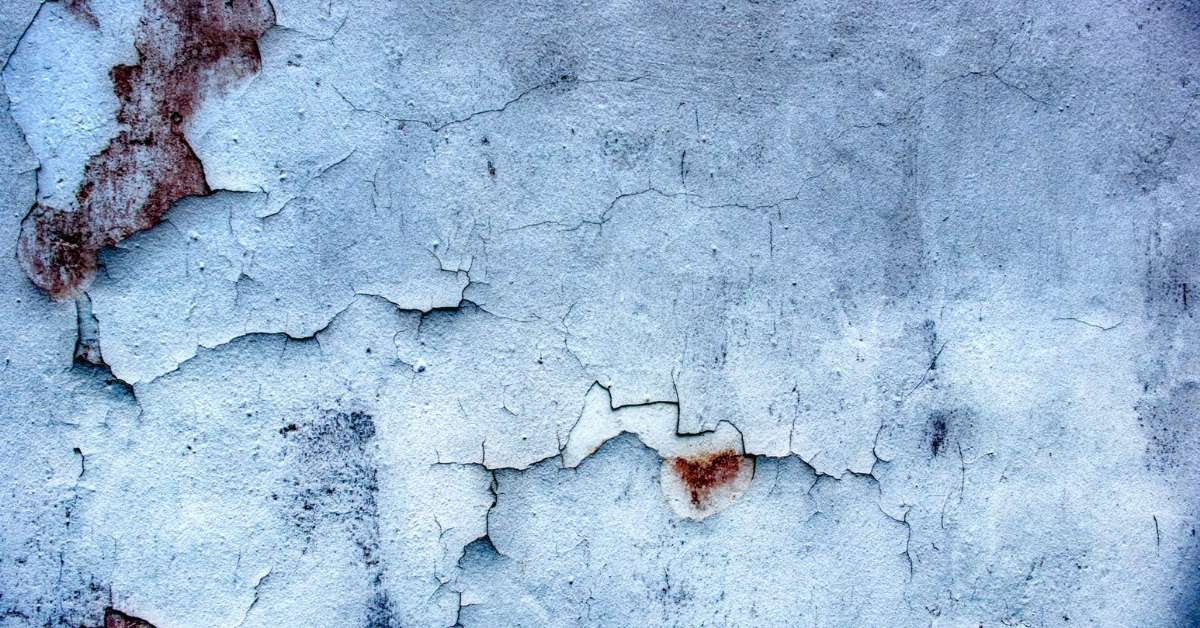
이미지 출처: Unsplash
라돈은 가스의 일종입니다. 따라서 투과성으로 인해 집과 건물에 쉽게 침투할 수 있습니다. 집에는 라돈 가스가 통과할 수 있는 특정 부분이 있습니다. 다음은 그 중 일부입니다.
콘크리트 바닥의 균열
라돈은 일반적으로 땅속에서 방출되기 때문에 바닥으로 유입되는 것은 불가피합니다. 따라서 크롤링 공간이나 지하실의 바닥에 균열이 있는 경우 가스가 그곳을 통해 유입될 가능성이 높습니다. 따라서 라돈이 공간에 퍼지는 것을 방지하기 위해 이러한 이음새를 수리하는 것이 필수적입니다.
벽에 생긴 균열
놀랍게도 바닥재가 완전히 밀폐되어 있어도 라돈이 집안으로 들어올 수 있습니다. 벽에 틈새나 균열이 있으면 라돈이 유입될 수 있습니다. 다시 한 번 강조하지만, 라돈이 벽에 침투하지 못하도록 완화 전략을 설치하는 것이 중요합니다. 벽에 균열이 생기기 시작하면 즉시 수리하세요.
그러나 균열이 없더라도 라돈은 벽에 침투할 수 있습니다. 특히 슬라브나 블록의 구멍을 통과할 수 있습니다. 이를 적절히 밀폐하는 것이 유해한 가스를 차단하는 방법입니다.
서비스 파이프의 이음새
집의 서비스 파이프는 라돈이 들어오는 문이기도 합니다. 어떤 경우에는 틈새가 너무 커서 가스가 몰래 들어와 생활 공간에 침투할 수 있습니다. 전문 계약업체가 이 문제를 해결하는 데 도움을 줄 수 있습니다.
크롤링 공간
크롤링 스페이스에 진공 청소기가 있는 한 라돈이 유입될 수 있습니다. 이러한 진공 청소기는 그 아래로 기체 물질을 끌어당깁니다. 크롤링 스페이스에 환기구가 있더라도 작은 진공 청소기가 터질 가능성이 있습니다. 그 결과 라돈을 흡수하여 집 전체에 서서히 확산시킵니다.
라돈 정화가 중요한 이유는 무엇인가요?
라돈은 특히 장기간 노출될 경우 건강에 많은 위험을 초래할 수 있습니다. 예를 들어 라돈은 암 발병 위험을 높일 수 있습니다. 바로 이 점이 집안에서 라돈을 제어하거나 제거하기 위해 최선을 다해야 하는 이유입니다.
라돈은 우리가 다루고 싶지 않은 물질이기 때문에 이에 대한 효과적인 완화 메커니즘을 갖추는 것이 중요합니다. 한 가지 방법은 공기청정기를 사용하는 것입니다. 라돈 문제가 심각한 경우에는 라돈 제거 전문 업체에 문의하는 것이 좋습니다.
라돈 제거를 위한 공기청정기 추가하기
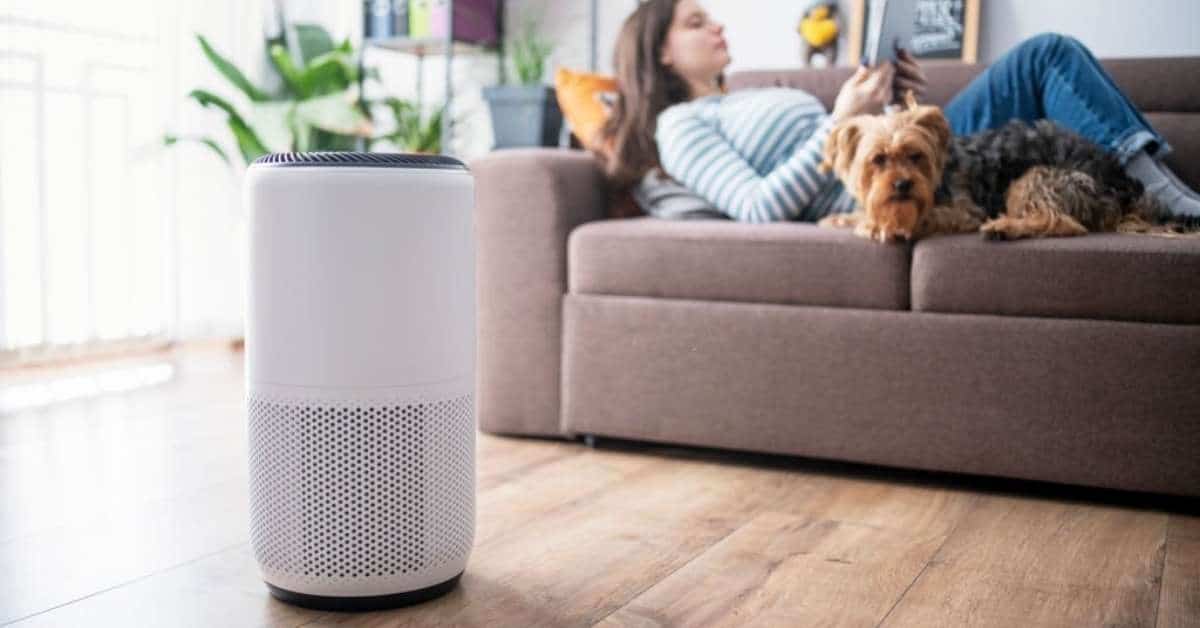
이미지 출처: iStockphoto
공기청정기는 라돈 문제가 있는 가정과 건물에 필수적인 가전제품입니다. 물론 이러한 공기청정기는 높은 수준의 라돈을 처리하지 못할 수도 있습니다. 하지만 이러한 기기가 라돈의 확산을 제어하는 데 도움이 될 수 있다는 것은 확실합니다.
이러한 공기청정기를 사용하면 라돈에 노출될 가능성을 최소화할 수 있습니다. 이러한 공기청정기와 실내 공기질 개선에 도움이 되는 공기청정기에 대해 자세히 알아보세요.
공기청정기가 공기질 개선에 중요한 이유는 무엇인가요?
실내 공기 오염은 오늘날 문제가 되고 있습니다. 집, 건물, 부동산의 내부와 외부에는 수많은 오염 물질이 존재할 수 있기 때문입니다. 창문을 열거나 정기적으로 진공청소기를 사용하는 등의 일반적인 공기 정화 방법으로는 이러한 공기 중 오염 물질을 처리할 수 없습니다.
미립자 물질, 가스 물질, 화학 물질, 먼지 등은 공기 중에 떠다니는 것들 중 하나입니다. 그리고 이러한 물질의 가장 나쁜 점은 일반적으로 눈에 보이지 않는다는 것입니다. 잦은 알레르기 발작과 천식 발작으로 인해 숨 쉬는 공기에 문제가 있다는 것을 알게 될 뿐입니다. 집 안에 있는 사람들이 더 자주 아프고 있습니다.
공기청정기는 이러한 공기 중 오염 물질을 억제하도록 설계되었습니다. 공기청정기는 실내의 공기를 흡수하여 일련의 필터를 통과하게 합니다. 그 후 공기는 다시 실내로 방출되지만 이번에는 더 깨끗하고 신선하게 방출됩니다.
라돈 제거용 공기청정기
집안에서 라돈을 제거하는 더 광범위하고 간단한 방법도 있지만, 공기청정기는 여전히 시도해 볼 만한 옵션입니다. 공기청정기는 생활 공간에 있는 저준위에서 중간 수준의 라돈을 서서히 제거할 수 있습니다. 공기청정기에는 이 작업을 수행할 수 있는 특수 필터가 있습니다.
특히 공기청정기에는 공기 중 수많은 기체 화합물, 화학 물질 및 기타 비고체 원소를 포집하는 탄소 필터가 있습니다. 따라서 이러한 장치를 사용하면 어디에 거주하든 라돈 수치를 최소화하거나 제어할 수 있습니다.
라돈 제거용 공기청정기는 안전한가요?
예. 엄밀히 말하면 필터 기반 매체를 사용하는 공기청정기는 공기 정화를 위한 가장 안전한 옵션입니다. 이러한 공기청정기는 작동할 때마다 공기 중에 잔류물이나 유해한 배출물을 생성하지 않기 때문입니다. 얼마나 오래 사용하든 실내 공기는 깨끗하게 유지됩니다.
주의해야 할 공기청정기의 유일한 유형은 오존 공기청정기입니다. 이러한 장치는 공기 중에 오존을 생성합니다. 오존은 공기 중의 오염 물질을 중화한다고 주장됩니다.
그러나 오존은 폐를 자극하는 기체 화합물이라는 점을 명심하세요. 심지어 공간에서 라돈의 영향을 악화시킬 수도 있습니다. 또한 오존이 공기 여과에 효과적인 메커니즘이라는 과학적 증거는 없습니다. 따라서 현재로서는 필터 기반 공기청정기를 사용하는 것이 좋습니다.
공기청정기는 라돈을 어떻게 제거하나요?
라돈은 땅속에서 자연적으로 생성되는 기체입니다. 기체이기 때문에 일반적인 방법으로는 제거할 수 없습니다. 실제로 라돈 전문 계약업체는 라돈 수치가 높은 지역을 처리하기 위해 전문화된 저감 절차를 사용합니다.
공기청정기의 경우, 탄소 필터가 제거 매체입니다. 이러한 탄소 필터는 가스 원소, 화학 물질 및 휘발성 유기 화합물을 포집할 수 있는 특수 설계가 되어 있습니다. HEPA 필터, 프리필터, 자외선으로는 공기 중 이러한 오염 물질을 제거할 수 없습니다.
이러한 활성탄 필터는 표면에 분자를 가둡니다. 이 필터는 다공질이기 때문에 오염 물질이 달라붙는 유효 표면적을 넓힐 수 있습니다.
공기청정기로 라돈 제거하기: 단계별
공기청정기는 필터를 통해 다양한 오염물질을 제거할 수 있습니다. 라돈과 같은 기체 물질의 경우 활성탄 필터가 사용됩니다. 다음은 공기청정기가 라돈 가스를 제거하는 방법에 대한 구체적인 단계입니다.
- 공기청정기는 팬을 사용하여 공기를 흡입합니다.
- 공기가 공기청정기 내부로 들어오면 여러 층의 필터를 통과하게 됩니다.
- 기체 물질이 탄소 필터를 통해 포집되는 곳입니다. 흡착 과정. 후자는 화학 물질과 물질을 표면에 가두어 공기 중으로 다시 순환하는 것을 방지하는 방식으로 작동합니다.
- 이렇게 정화된 공기는 다시 실내로 방출됩니다.
이 과정은 오염 물질의 존재가 통제될 때까지 반복됩니다. 이것이 공기 청정기가 화학 물질, 가스 자극 물질, 휘발성 유기 화합물을 제거하는 방식입니다.
라돈 제거 후 라돈이 가라앉는 데 얼마나 걸리나요?
이상적인 환경에서는 라돈을 효과적으로 제거할 수 있는 설비를 갖추면 단 몇 시간 만에 라돈을 제거할 수 있습니다. 하지만 현실은 그렇지 않습니다. 여러 요인이 제거 속도에 영향을 미칠 수 있기 때문입니다.
한 가지 요인은 구현된 완화 기술입니다. 어떤 시스템은 작고 어떤 시스템은 견고합니다. 하지만 큰 시스템은 설치하기가 더 어렵습니다. 동시에 집의 규모도 문제입니다. 넓은 집의 경우 라돈 수치가 제어되기까지 시간이 걸릴 수 있습니다.
출처도 고려해야 합니다. 거주 지역에 따라 라돈을 제거하는 것이 불가능할 수도 있습니다. 최선의 방법은 호흡기 문제를 일으키지 않도록 안전한 수준으로 조절하는 것입니다.
라돈 제거를 위한 공기청정기 구매 전 고려해야 할 사항
공기청정기의 효과는 라돈 제거에 필수적입니다. 따라서 집과 건물에 사용할 공기청정기를 선택하기 전에 다음 사항을 고려해야 합니다.
- 활성탄 필터 - 라돈과 같은 기체 물질을 포집하고 제거하는 필터입니다. 이 필터가 없으면 공기청정기는 지상에서 방출되는 라돈을 걸러낼 수 없습니다. 히소에어 공기청정기에는 이 필터가 포함되어 있으므로 반드시 확인해야 합니다.
- 깨끗한 공기 전달률 - 청정 공기 전달률(CADR)은 공기청정기가 주어진 시간 동안 처리할 수 있는 공기의 양을 측정한 수치입니다. 특히 청정 공기 전달률이 높을수록 공기 중 오염 물질을 더 많이 제거할 수 있습니다. 넓은 공간에서는 공기 중 오염물질이 확산되는 것을 방지하기 위해 강력한 공기 흐름을 제공하는 공기청정기가 필요합니다.
- HEPA 필터 - 공기청정기는 HEPA 필터를 사용해야 합니다. 이 필터를 사용하면 공기청정기는 알레르기 유발 물질이나 병원균과 같은 미세한 오염 물질을 99.9% 제거합니다. 기체 물질은 포집하지 못할 수 있지만 호흡기 질환을 악화시킬 수 있는 다른 오염 물질은 처리할 수 있습니다.
- 평방 피트 - 어떤 설정이든 공기청정기의 효과적인 커버리지를 평가해야 합니다. 기본적으로 공기청정기를 설치하려는 공간의 평방 피트와 일치해야 합니다. 따라서 지하실의 면적이 약 300제곱피트인 경우 최소 300제곱피트 이상의 유효 커버리지를 가진 공기청정기가 필요합니다. 숫자가 높을수록 좋습니다.
라돈 축적에 가장 적합한 공기청정기
오늘날 시장에는 수많은 공기청정기가 존재합니다. 하지만 라돈과 같은 기체 오염 물질에 대한 성능은 다음 공기청정기를 능가하는 제품은 없습니다:
1. 히소에어 모델 HA-1968
| 적용 범위 | 필터 유형 | |
| 히소에어 모델 HA-1968 | 1,937 평방 피트 | HEPA 필터, 활성탄 필터, 프리 필터, UVC 라이트 |
| HisoAir 모델 HA-1601 | 1011 평방 피트 | HEPA 필터, 활성탄 필터, 프리 필터, UVC 라이트 |
| HisoAir 모델 HA-139 | 516 평방 피트 | HEPA 필터, 활성탄 필터, 프리 필터, UVC 라이트 |
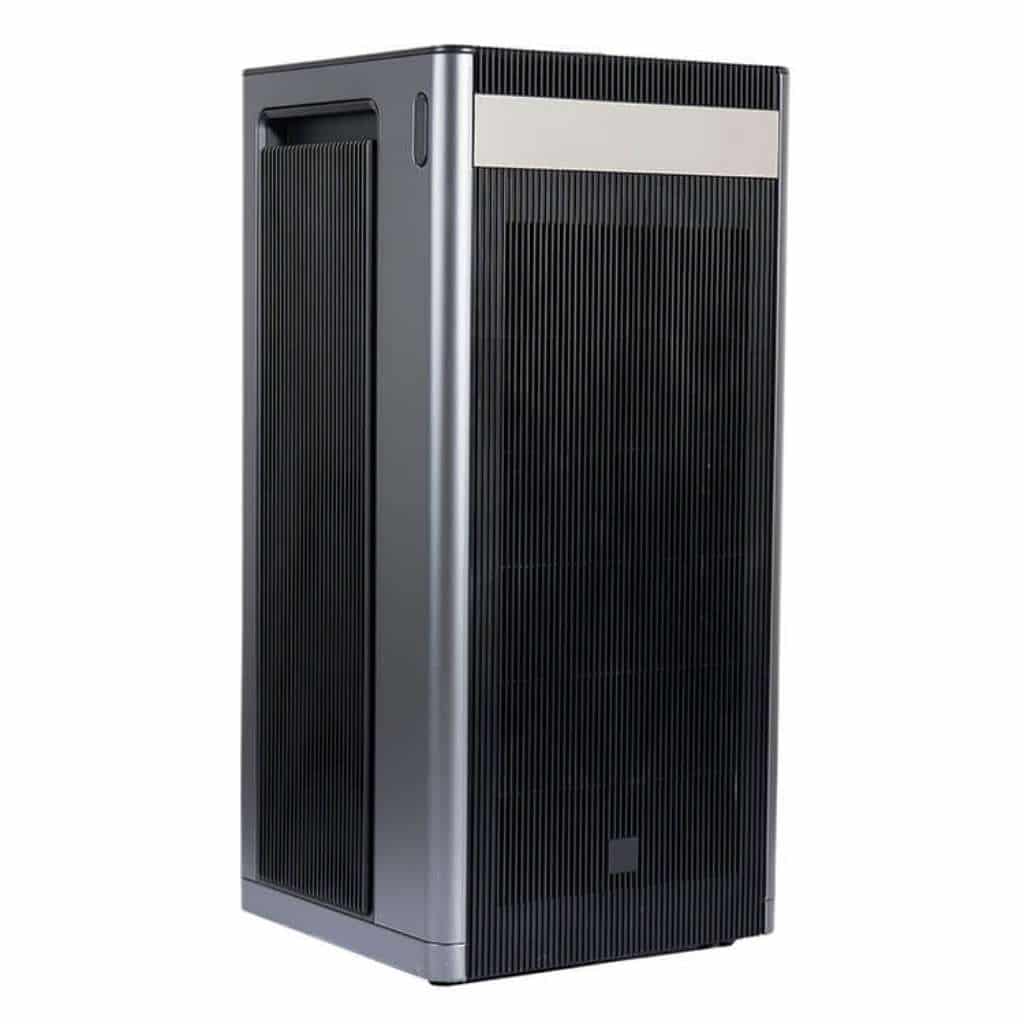
이미지 출처: HisoAir
히소에어 HA-1968 모델부터 시작하겠습니다. 이 특정 공기청정기 라인은 사무실, 학교, 상업용 건물과 같은 넓은 공간을 위해 설계되었습니다. 이 제품은 1,500m3/h의 높은 청정 공기 전달률(CADR) 덕분에 포괄적인 공기 정화가 가능합니다. 이러한 수치는 이 공기청정기가 넓은 면적의 공간에 배치되어 있어도 효율적으로 공기를 처리하고 정화할 수 있음을 나타냅니다.
또한 이 공기청정기는 완벽한 필터를 장착하고 있습니다. 활성탄 필터는 라돈과 같은 기체 물질을 포집하는 데 매우 효과적입니다. 또한 휘발성 유기 화합물 및 폐 문제를 일으킬 수 있는 기타 화학 물질을 제거하는 데 탁월합니다. 인체공학적 인터페이스도 갖추고 있어 사용자의 요구 사항에 따라 올바르게 작동할 수 있습니다.
| 장점 | 단점 |
|
|
2. HisoAir 모델 HA-1601
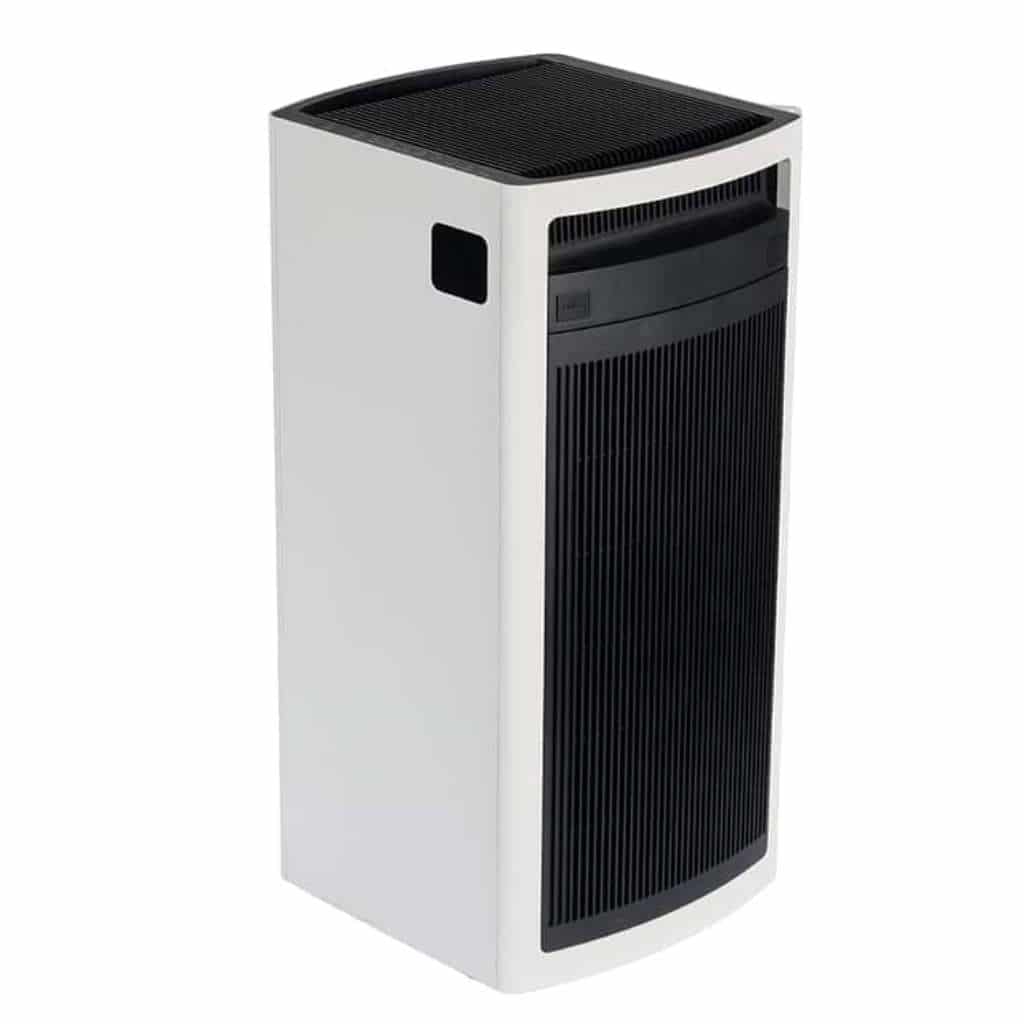
이미지 출처: HisoAir
집안의 라돈 가스를 안전한 수준으로 유지하려면 히소에어 모델 HA-1601을 설치해야 합니다. 이 공기청정기는 지하실이나 거실과 같이 공기 중 오염 물질이 농도가 높은 공간에서 작동하도록 설계되었습니다. 고품질 활성탄 필터 덕분에 라돈을 효과적으로 포집할 수 있습니다. 활성탄은 다양한 기체 물질을 흡착하여 공기 중으로 다시 순환하는 것을 방지합니다.
동시에 히소에어 HA-1601 모델은 에너지 효율적인 설계를 갖추고 있습니다. 전기 요금이 급증하지 않고 지속적으로 작동할 수 있습니다. 지속적인 공기 정화가 필요한 공간에 필요한 필수 기능입니다. 또한 조용하게 작동하므로 어디에 두든 집안에 방해가 되지 않습니다.
| 장점 | 단점 |
|
|
3. HisoAir 모델 HA-139
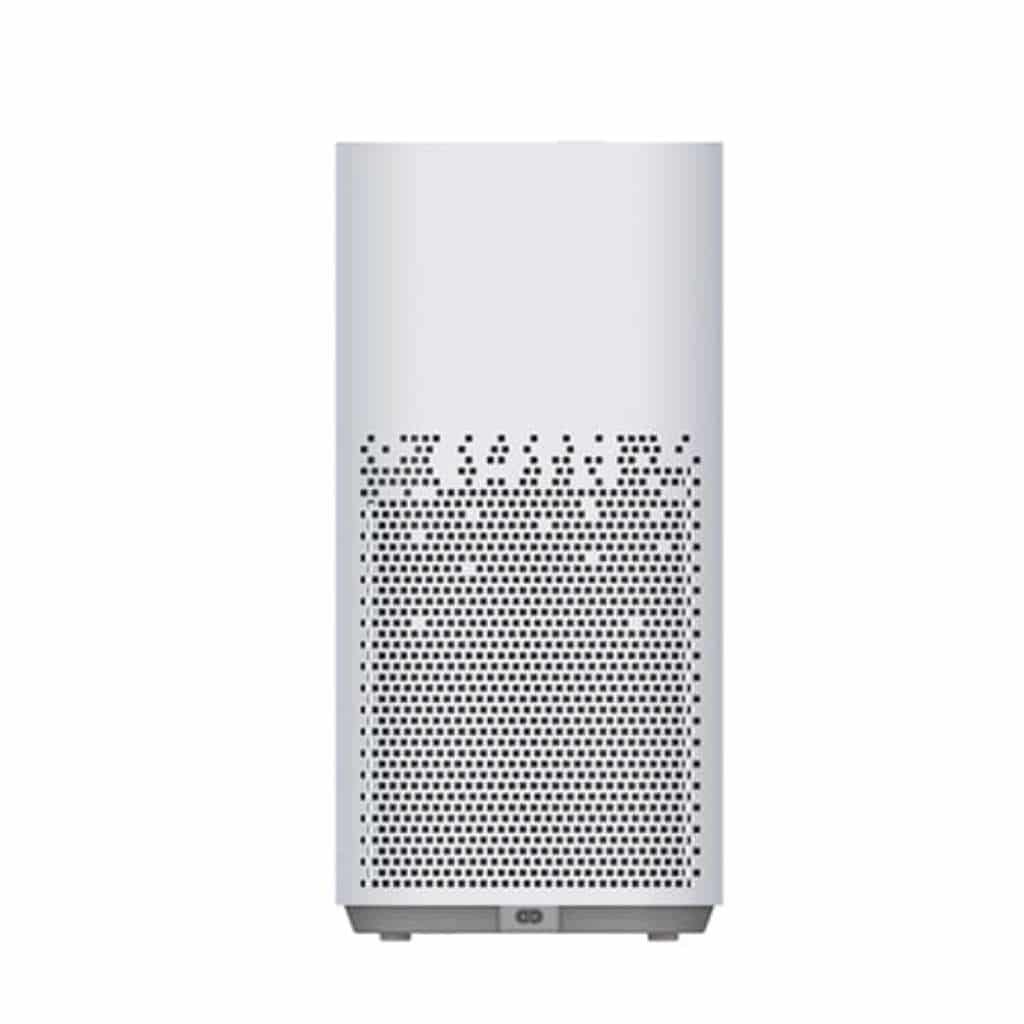
이미지 출처: HisoAir
가스 및 화학 오염 물질을 제거할 때는 히소에어 HA-139 모델을 항상 신뢰할 수 있습니다. 이 특별한 공기청정기는 혁신적인 탄소 필터가 있어 이러한 가스 물질과 냄새를 유발하는 오염물질을 걸러냅니다. 이 필터는 공기를 신선하고 깨끗하며 통기성 있게 유지해줍니다. 또한 미세한 공기 중 오염 물질의 증식을 억제하는 HEPA 필터와 같은 다른 필수 필터도 포함되어 있습니다.
이 공기청정기를 사용하면 두통이 생기지 않습니다. 모든 컨트롤이 매우 간단하기 때문에 원할 때마다 설정을 조정할 수 있습니다. 흥미롭게도 이 공기청정기에는 공기질 센서도 포함되어 있습니다. 이를 통해 숨쉬는 공기에 질병을 유발할 수 있는 미립자가 없는지 알 수 있습니다. 전반적으로 히소에어 HA-139 모델은 다양한 용도로 사용할 수 있는 훌륭한 공기청정기입니다.
| 장점 | 단점 |
|
|
라돈 제거 후 라돈 축적을 방지하는 방법
문제의 심각도에 따라 라돈이 없는 집을 만들기 위해 할 수 있는 몇 가지 방법이 있습니다. 다음은 이러한 전략 중 일부입니다:
- 특히 크롤링 스페이스가 없는 집의 경우 바닥재 시스템 업그레이드를 고려해야 합니다. 바닥재 아래에 가스 투과성 층을 깔면 됩니다. 두꺼운 자갈 층이 그 역할을 할 수 있습니다. 그 후에는 라돈이 통과하지 못하도록 플라스틱 시트로 덮어야 합니다.
- 다음으로, 크롤링 스페이스나 지하실에서 지붕 쪽으로 가스 밀폐 파이프를 설치하는 것을 고려해야 합니다. 이 파이프는 지상의 가스 성분을 집 밖으로 배출하는 데 도움이 됩니다.
- 흥미로운 접근 방식은 다락방에 전기선을 설치하는 것입니다. 이렇게 하면 다락에 환기 팬을 설치할 수 있습니다. 이 팬은 파이프를 흡입 시스템으로 전환하여 집안의 가스와 화학 물질을 흡수합니다.
- 물론 집안을 충분히 환기하는 것도 라돈 오염을 줄이는 데 도움이 될 수 있습니다.
라돈을 제거하는 다른 방법
라돈은 자연적으로 발생하는 기체이기 때문에 라돈을 제거하는 것은 쉽지 않습니다. 결국 라돈은 집 밖에도 존재할 수 있습니다. 결국 라돈은 집과 건물 안으로 들어올 수 있습니다.
라돈 축적은 안전한 수치가 없다는 점에서 문제가 됩니다. 가장 좋은 방법은 라돈을 가능한 한 가장 낮은 수준으로 낮추는 것입니다. 방법은 다음과 같습니다.
전문가 찾기
가장 먼저 해야 할 일은 자격을 갖춘 전문가와 연락하여 상황을 평가하고 해결하는 것입니다. 미국에는 이러한 전문가와 연락할 수 있는 국가 라돈 숙련도 프로그램이 있습니다.
라돈 수치가 높으면 기술적이고 전문적인 개입이 필요합니다. 시공업체가 전문적이지 않으면 문제가 사라지지 않습니다. 오히려 더 악화될 수 있습니다. 전문 계약업체가 오면 적절한 해결책을 제시할 수 있습니다. 하지만 물론 여기에는 비용이 발생합니다.
활성 토양 감압
라돈 수치를 억제하기 위한 구체적인 솔루션 중 하나는 토양 감압 시스템입니다. 이 방법은 집이나 건물을 대대적으로 개조할 필요가 없습니다.
이 방법은 일반적으로 비용 효율적이기 때문에 부동산 소유주가 선호합니다. 이 방법은 지하실이나 지하에 콘크리트 바닥이 있는 가정에서 흔히 사용하는 방법입니다. 이 방법을 사용하면 토양과 실내 사이의 기압이 역전됩니다. 이렇게 하면 라돈 가스가 집안으로 유입되는 것을 억제할 수 있습니다.
다시 말하지만, 전문가에게 문의하면 이 특정 라돈 저감 방법이 여러분의 환경에 적용 가능한지 알 수 있습니다.
블록 벽 감압
이 특별한 라돈 저감 시스템은 덕트와 팬을 사용합니다. 이 두 가지 구성 요소는 블록 벽의 빈 구멍을 통해 라돈 가스를 흡입하도록 설계되었습니다. 기본적으로 이 방법은 집의 벽이 콘크리트 블록 또는 이와 유사한 재료로 만들어진 경우에 효과적입니다.
이 방법의 효과는 빈 공간의 기압이 지하실 내의 기압보다 낮은지 확인하는 데 달려 있습니다. 후자는 흡입 및 배관 구성 요소가 설치되는 곳입니다. 기압의 차이를 통해 라돈 가스가 지상에서 끌어당겨집니다. 결과적으로 라돈은 집 안으로 들어오기 전에 분산됩니다.
이 특정 방법은 매우 효과적이지만 숙련된 계약자가 필요합니다. 또한 라돈 수치가 공기 1리터당 4피코큐리(pCI/L)보다 높은 경우에만 권장됩니다.
균열 및 틈새 봉인
집의 라돈 수치가 높지 않다면 라돈 수치를 낮추기 위해 할 수 있는 몇 가지 방법이 있습니다. 이러한 전략 중 하나는 벽과 바닥의 균열과 틈새를 공략하여 수리하는 것입니다.
이러한 간단한 수리를 통해 집 안으로 가스가 유입되는 것을 방지할 수 있습니다. 그리고 이러한 수리의 가장 좋은 점은 혼자서 할 수 있다는 것입니다. 여기에는 코크와 석고와 같은 올바른 실란트를 사용하는 것이 필수적입니다.
물론 손상이 너무 심하다면 전문 시공업체에 의뢰해 수리해야 합니다. 전체 수리는 비용이 많이 들지만 라돈이 쌓이는 것을 방지할 수 있습니다.
결론
보시다시피 라돈 축적은 건강에 위험합니다. 특히 장기간 노출될 경우 다양한 건강상의 합병증을 유발할 수 있습니다. 따라서 라돈 수치가 높은 집과 건물에는 적절한 저감 조치를 취해야 합니다.
고품질 공기청정기를 설치하면 집 안의 라돈 오염을 예방할 수 있습니다. 카본 필터를 통해 라돈 가스가 집안에서 증식하지 못합니다. 방문하기 HisoAir 라돈에 가장 적합한 공기청정기에 대해 알아보세요!
다른 유익한 블로그도 확인해 보세요!

